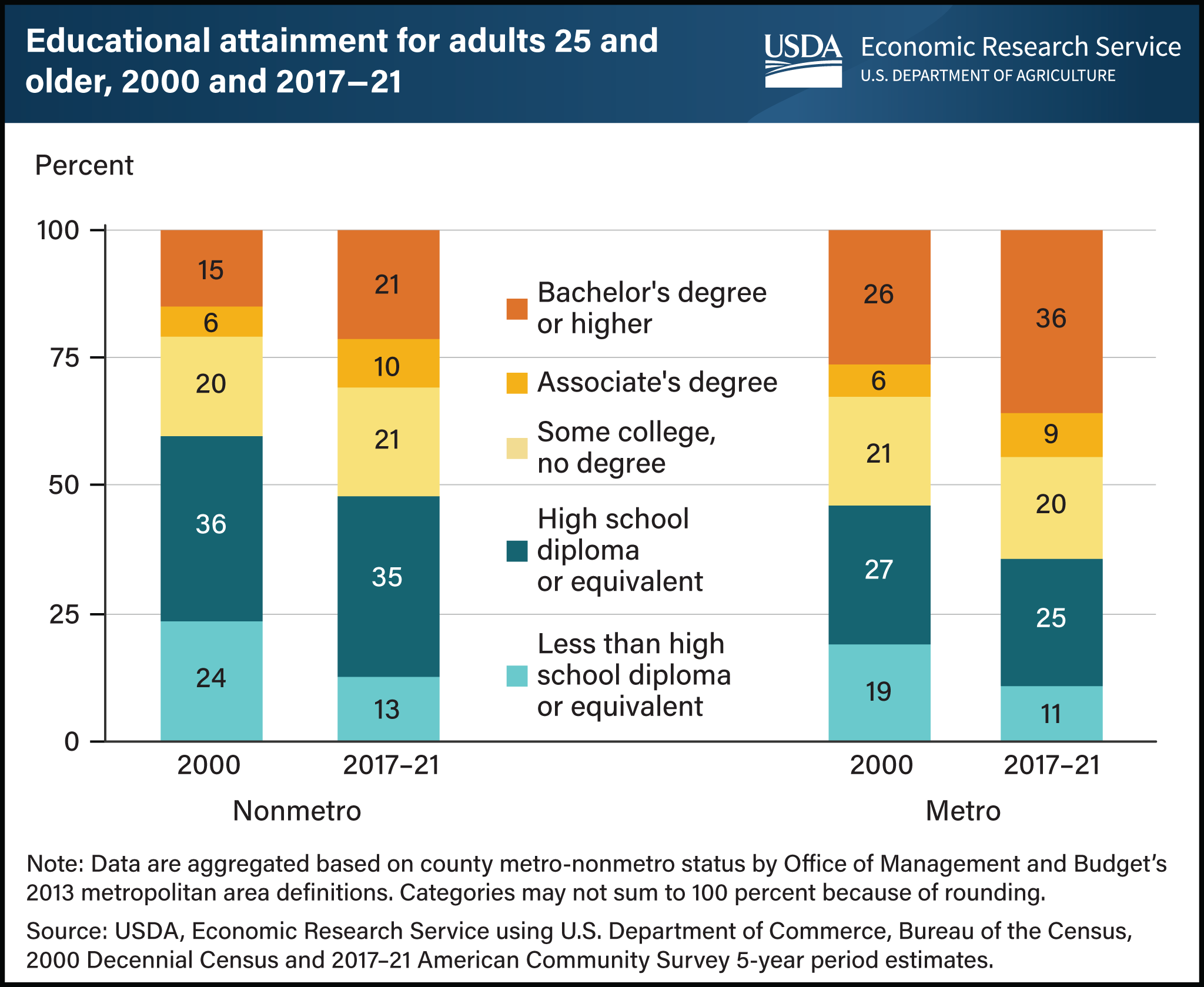Educational attainment improved in rural America but educational gap with urban areas grew for bachelor's degrees and higher
- by Austin Sanders
- 3/20/2023

Formal educational attainment in rural America has grown over time, but rural (nonmetro) areas still lag urban (metro) areas. From 2000 to 2017–21 (the most recent estimate period from the American Community Survey), the share of adults ages 25 and older with a bachelor’s degree or higher increased in rural areas from 15 to 21 percent. In the same time span, the share of adults in urban areas with a bachelor’s degree or higher increased from 26 to 36 percent, widening the rural-urban gap from 11 to 15 percentage points in these two reference periods. This rural-urban gap in the share of people with at least a bachelor’s degree is even larger for younger age groups. In 2017–21, the share of working-age adults (ages 25–64) with at least a bachelor’s degree was 37 percent in urban areas and 21 percent in rural areas, while the share of younger adults ages 25–44 with at least a bachelor’s degree was 40 percent in urban areas and 22 percent in rural areas. One explanation for the persisting and widening gap may be the higher pay that more highly educated workers can often earn in urban labor markets. This chart appears in the USDA, Economic Research Service data product Charting the Essentials, published in January 2023.
We’d welcome your feedback!
Would you be willing to answer a few quick questions about your experience?

